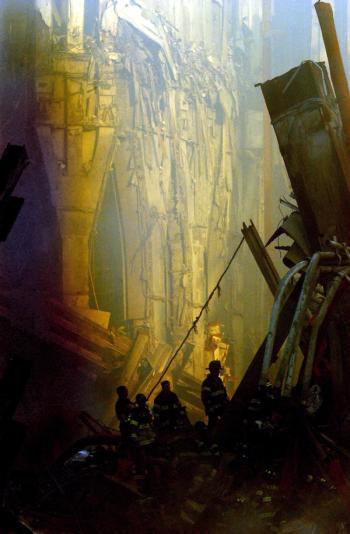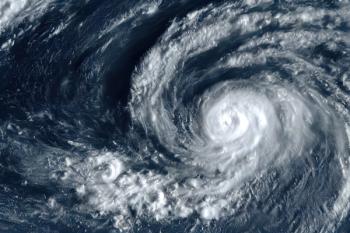
- Vol 32 No 9
- Volume 32
- Issue 9
PTSD in DSM-5: Understanding the Changes
Despite the efforts of a dedicated Work Group, DSM-5 has not significantly changed the problems with PTSD that beset DSM-IV.
[[{"type":"media","view_mode":"media_crop","fid":"41353","attributes":{"alt":"© Mariya Lavchieva/shutterstock.com","class":"media-image media-image-right","id":"media_crop_7257861830107","media_crop_h":"0","media_crop_image_style":"-1","media_crop_instance":"4355","media_crop_rotate":"0","media_crop_scale_h":"185","media_crop_scale_w":"137","media_crop_w":"0","media_crop_x":"0","media_crop_y":"0","style":"float: right;","title":"© Mariya Lavchieva/shutterstock.com","typeof":"foaf:Image"}}]]If your concern as a clinician is how to code PTSD when we move to ICD-10-CM codes in October of this year, you need not fret. Simply go to the DSM-5 manual, find the PTSD diagnosis, and switch from the DSM-IV/ICD-9 309.81 to the ICD-10 F43.10. Do the same for acute stress disorder.
That simple maneuver, useful as it is for clinical practice, does hide some of the complexity of the new version of the manual. To begin with, DSM-5 has shuffled the deck and moved PTSD out of the anxiety disorders section, as in DSM-IV, and into a newly created section, trauma- and stress-related disorders. PTSD now keeps company with acute stress disorder, reactive attachment disorder, disinhibited social engagement disorder, all the adjustment disorders, other specified trauma- and stressor-related disorder, and unspecified trauma- and stressor-related disorder. Odd company, indeed. It’s as if the DSM-5 Work Group got stuck on the word “stress” in the PTSD acronym and decided that any diagnosis that includes this word belongs in the same section. Someone who experiences clinical anxiety in the context of a new job is now lumped into the same super-category as someone who has experienced a near-death on the battlefield.
What then is the reason for moving PTSD out of anxiety disorders and into the new trauma and stress disorders section? The main rationale is that PTSD often manifests with non-anxiety symptoms such as dissociative experiences, anger outbursts, and self-destructive behavior. As discussed below, however, patients with “complex PTSD” usually experience anxiety along with other symptoms. Given the imperfect fit of PTSD under anxiety or stress, we might conclude that the decision to choose one or the other is to some degree arbitrary.
Diagnostic criteria
The coding change is simple. What about the diagnostic criteria? By way of difference, DSM-5 specifies that the criteria apply to adults and children over age 6 (and includes another set of criteria for children under 6); eliminates the immediate response to the trauma as involving fear, helplessness, or horror; and splits the avoidance symptoms into 2 clusters (ie, distressing memories and external reminders). In addition to these changes, virtually all the symptoms of each cluster are elaborated or written differently, and for each cluster extra symptoms are added. More about this later.
Complex PTSD
In the years of DSM-5 development, one point of controversy in the work on PTSD was whether to include symptoms of complex PTSD (also called disorders of extreme stress not otherwise specified) in the diagnosis.1 The argument for inclusion was that many sufferers of trauma and chronic trauma do not experience the standard symptoms of PTSD but rather symptoms of depression, anxiety, or dissociation, or of borderline personality disorder. The authors of DSM-5 have handled this issue in a curious manner.2 To begin with, they eliminated criterion A2, which included the words “. . . response involved intense fear, helplessness, or horror,” explaining that “Emotional reactions to the traumatic event (eg, fear, helplessness, horror) are no longer a part of criterion A. The clinical presentation of PTSD varies.”3 The new criterion A does not, however, describe other possible reactions.
Where are the symptoms of complex PTSD? In the introductory paragraph to the trauma- and stressor-related disorders section, the authors write: “It is clear, however, that many individuals who have been exposed to a traumatic or stressful event exhibit a phenotype in which, rather than anxiety- or fear-based symptoms, the most prominent clinical characteristics are anhedonic and dysphoric symptoms, externalizing angry and aggressive symptoms, or dissociative symptoms.”3 So again, where in the manual are these symptoms? They get a one-sentence mention in the PTSD text but do not appear in the diagnostic criteria. Nor are they mentioned in the criteria or discussion section of either other specified trauma- and stressor-related disorder or unspecified trauma- and stressor- related disorder, in either of which we might expect them to appear. But finally, depression and aggression show up in reactive attachment disorder, another of the stress disorders. The problem is that this is defined as a diagnosis of children. We must conclude, therefore, that DSM-5 has hinted at symptoms of complex PTSD, but in the end has left them out of the manual. DSM-5 continues to opt for a universal reaction to stress, as presented in the diagnostic criteria.
Culture and PTSD
In 2010 I wrote a blog4 on PTSD as illustrative of DSM problems in cultural diversity. In that blog, I focused on research on the effects of political violence in Peru.5,6 In those studies, the McGill University researchers found a 25% incidence of classic PTSD symptoms among their victim research group but also a high incidence of depression and anxiety. Their findings were consistent with those of Hinton and Lewis-Fernandez,7 who reviewed the extensive research on PTSD in 2011 and concluded that the DSM-IV symptom cluster does have a degree of validity on its own, but that DSM-IV does not do justice to the great cultural variety of every aspect of response to trauma. In the DSM-5 discussion of PTSD, there is a small subsection, culture-related diagnostic issues, devoted to cultural differences. While this subsection does recognize cultural variation, and while DSM-5 also has an entire section III dedicated to “cultural formulation,” these commentaries do not alter the core diagnostic criteria of PTSD, which continue to convey the sense of a universal response to trauma. Thus, as with complex PTSD, DSM-5 has not significantly changed the problems with PTSD that beset DSM-IV.
Conclusion
What can we conclude about PTSD in DSM-5? Despite the efforts of a dedicated Work Group, DSM-5 has not fixed such major concerns of DSM-IV as complex PTSD and cultural variance; and these issues are in turn related to the DSM-5 insistence on a universal response to trauma as framed by the PTSD diagnostic criteria.
DSM-5 has introduced many changes in the wording of the PTSD diagnostic criteria, so many that the manual evokes an almost obsessive need to make things more precise, as if, in the uncertain area of psychological trauma and its consequences, DSM-5 will at all costs pin it down.
For the clinician who tries to diagnose using DSM, this could involve a time-consuming effort to get the criteria right. And given that experienced clinicians mostly diagnose through prototypes and not by counting criteria, and that there is no significant change in PTSD from DSM-IV, it is hard to imagine that the experienced clinician will pay much attention to the changes the Work Group has made.
Disclosures:
Dr Phillips is Clinical Professor of Psychiatry in the department of social and behavioral health at the Yale Global Mental Health Program at the Yale School of Medicine in New Haven, CT.
References:
1. US Department of Veterans Affairs. PTSD: National Center for PTSD: Complex PTSD.
2. American Psychiatric Association. DSM-5 Development. G 03 Posttraumatic Stress Disorder.
3. American Psychiatric Association. Diagnostic and Statistical Manual of Mental Disorders, Fifth Edition. Washington, DC: American Psychiatric Association; 2013.
4. Phillips J. The cultural dimension of DSM-5: PTSD. Psychiatric Times. 2010.
5. Pedersen D. Political violence, ethnic conflict, and contemporary wars: broad implications for health and social well-being. Soc Sci Med. 2002;55:175-190.
6. Pedersen D, Tremblay J, Errazuriz C, Gamarra J. The sequelae of political violence: assessing trauma, suffering and dislocation in the Peruvian highlands. Soc Sci Med. 2008;67:205-217.
7. Hinton DE, Lewis-Fernandez R. The cross-cultural validity of posttraumatic stress disorder: implications for DSM-5. Depress Anxiety. 2011;28:783-801.
Articles in this issue
about 10 years ago
A Review of Changes in DSM-5 Sleep-Wake Disordersabout 10 years ago
Sleep-Related Violenceabout 10 years ago
Parasomnias: What Psychiatrists Need to Knowabout 10 years ago
The Correlation Between Sleep Disturbance and Suicideabout 10 years ago
Sleep Disturbances After Traumatic Brain Injuryabout 10 years ago
Koryagin, Suspicious of Glasnost, Recounts Ongoing Soviet Abusesabout 10 years ago
Weight Loss Associated With Cholinesterase Inhibitors in the ElderlyNewsletter
Receive trusted psychiatric news, expert analysis, and clinical insights — subscribe today to support your practice and your patients.














